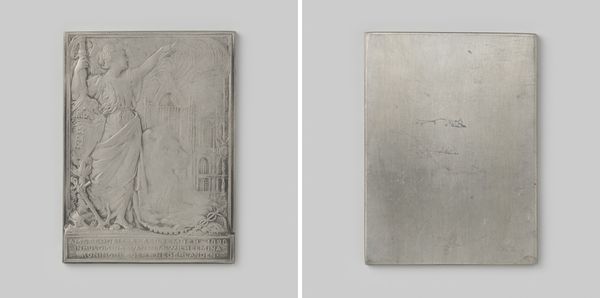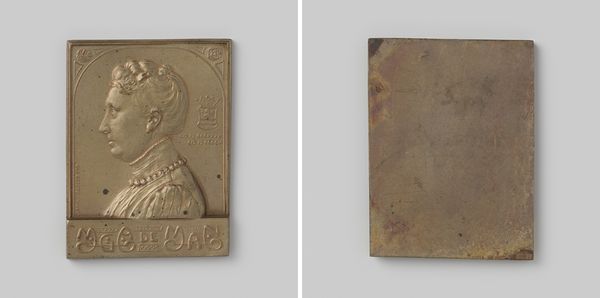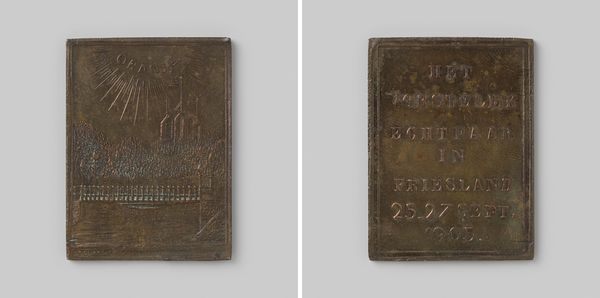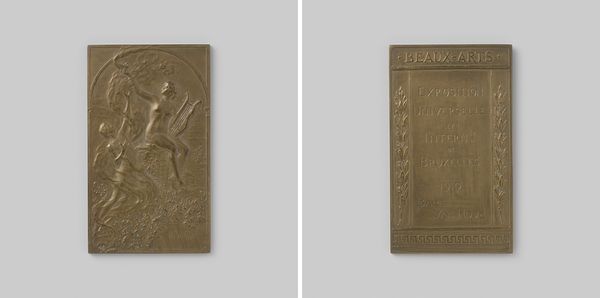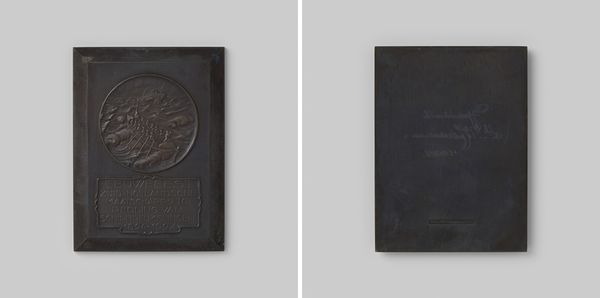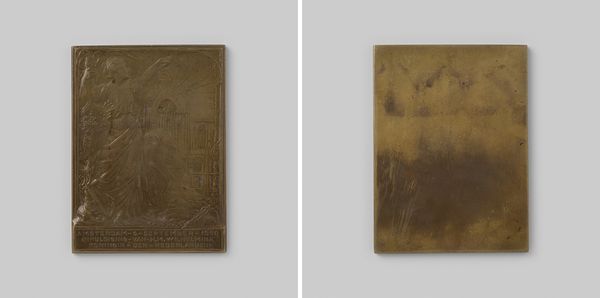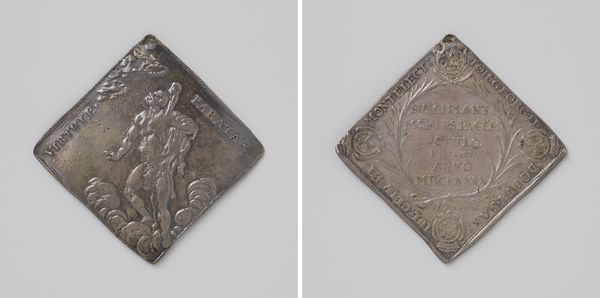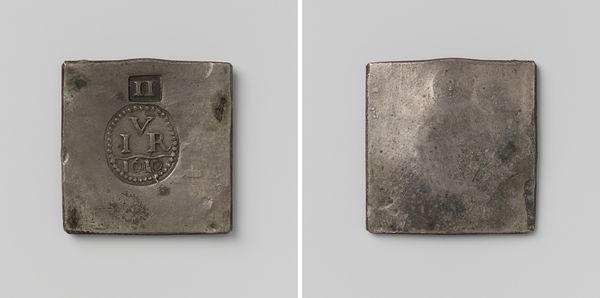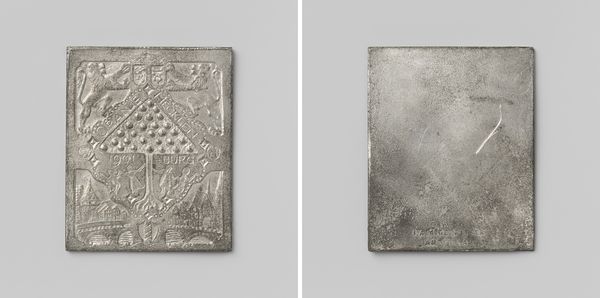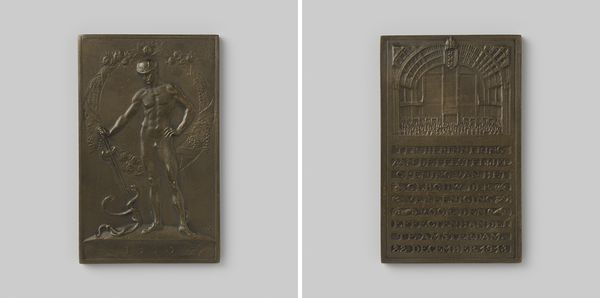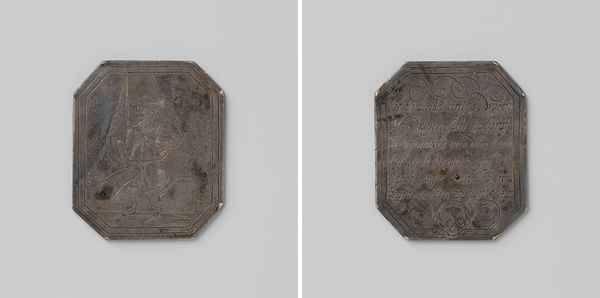
Inhuldiging van Wilhelmina, koningin der Nederlanden te Amsterdam, plaquette aangeboden door de stad Amsterdam before 1898
0:00
0:00
metal, relief, sculpture
#
portrait
#
metal
#
relief
#
coloured pencil
#
sculpture
#
history-painting
#
realism
Dimensions: length 10.1 cm, width 7.5 cm, weight 226.42 gr
Copyright: Rijks Museum: Open Domain
Editor: We are looking at a metal relief sculpture, or plaquette, commemorating the inauguration of Queen Wilhelmina of the Netherlands in Amsterdam, prior to 1898, made by Koninklijke Utrechtsche Fabriek van Zilverwerken van C.J. Begeer. The classical figure seems to be ushering in a new era. What story does this piece tell, in your view? Curator: It's a fascinating piece of historical imagery. Consider the sociopolitical context: Wilhelmina's ascension marked the end of a regency, a time of political maneuvering. This plaquette, offered by the city of Amsterdam, isn't just celebratory; it's a carefully constructed narrative. Notice the figure—she’s allegorical, not a straightforward portrait. Who is she, and what does her gesture imply? Editor: She looks like a classical figure, pointing towards… the future, perhaps? Is that the Royal Palace behind her? Curator: Precisely! And her classical garb? It links the young queen to established power, projecting stability amidst shifting political sands. The realism is tempered with idealized symbolism. This blend tells us much about how the monarchy wanted to be perceived and how Amsterdam projected that image. Where might this plaquette have been displayed and for what public audience? Editor: Maybe in a government building or presented as an official gift, so something formal and visible, shaping public opinion... It's interesting how art becomes a tool for political messaging. Curator: Exactly. And that awareness allows us to critically examine not just the "what" of the artwork, but also the "why" and "for whom". Art isn't neutral. Editor: I hadn't considered how much intention went into crafting this image. It's made me rethink what it means for a city to “present” something. Thanks! Curator: My pleasure! Seeing art as part of broader historical narratives illuminates so much more.
Comments
No comments
Be the first to comment and join the conversation on the ultimate creative platform.
